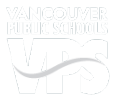SCIENCE
FOSTERING CURIOSITY ABOUT THE
NATURAL WORLD
Science education can help foster a student’s curiosity about the natural world and build their enthusiasm for investigation, observation and problem-solving. VPS students will use the same practices as scientists and engineers to develop solutions to real-world problems. Student scientists ask questions and define problems; develop and use models; plan and carry out investigations; analyze and interpret data; use math and computational thinking; construct explanations and design solutions; use evidence; and obtain, evaluate and communicate information.
Contact
Melina Dyer
K-5 Science specialist
360-313-1020
Email
